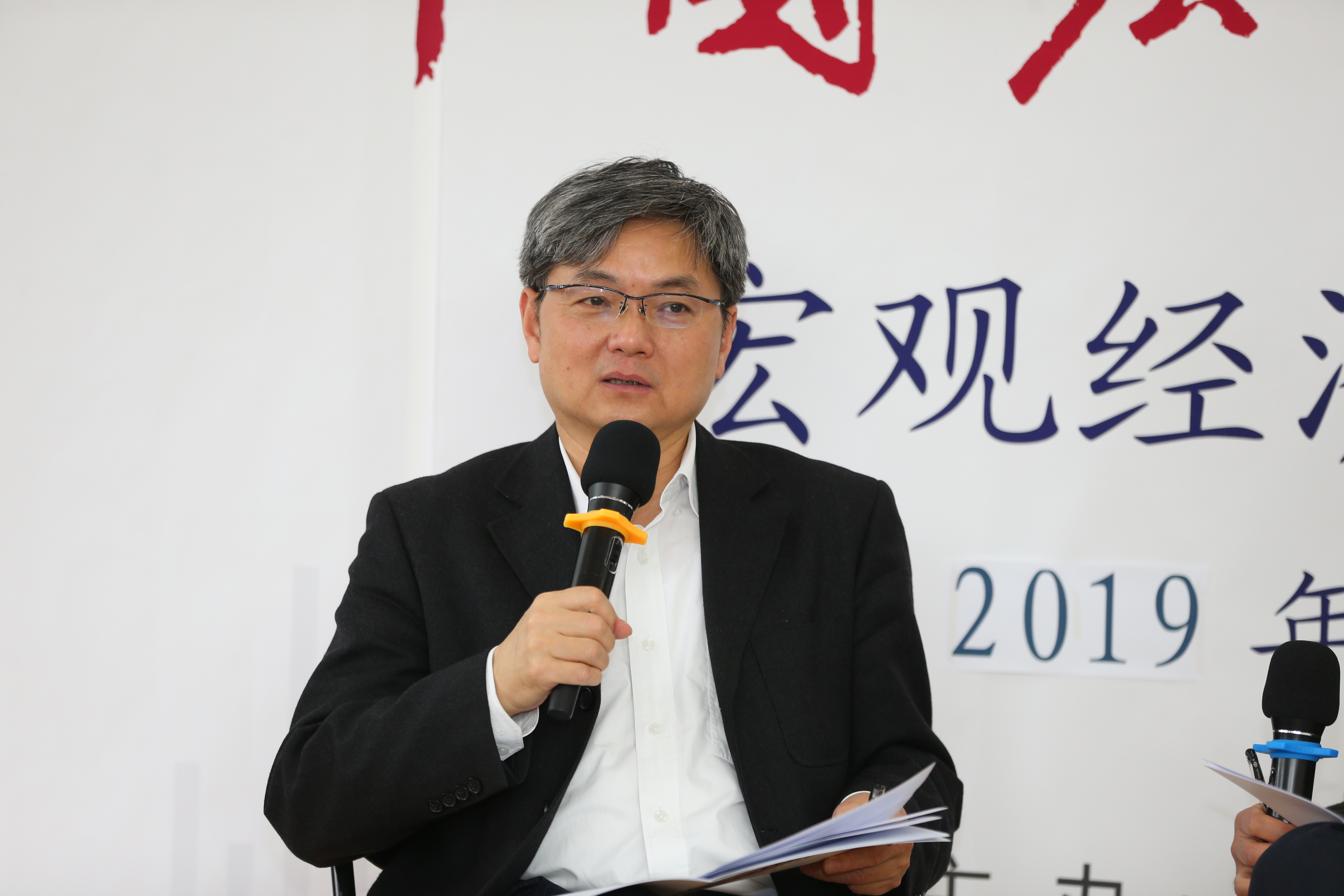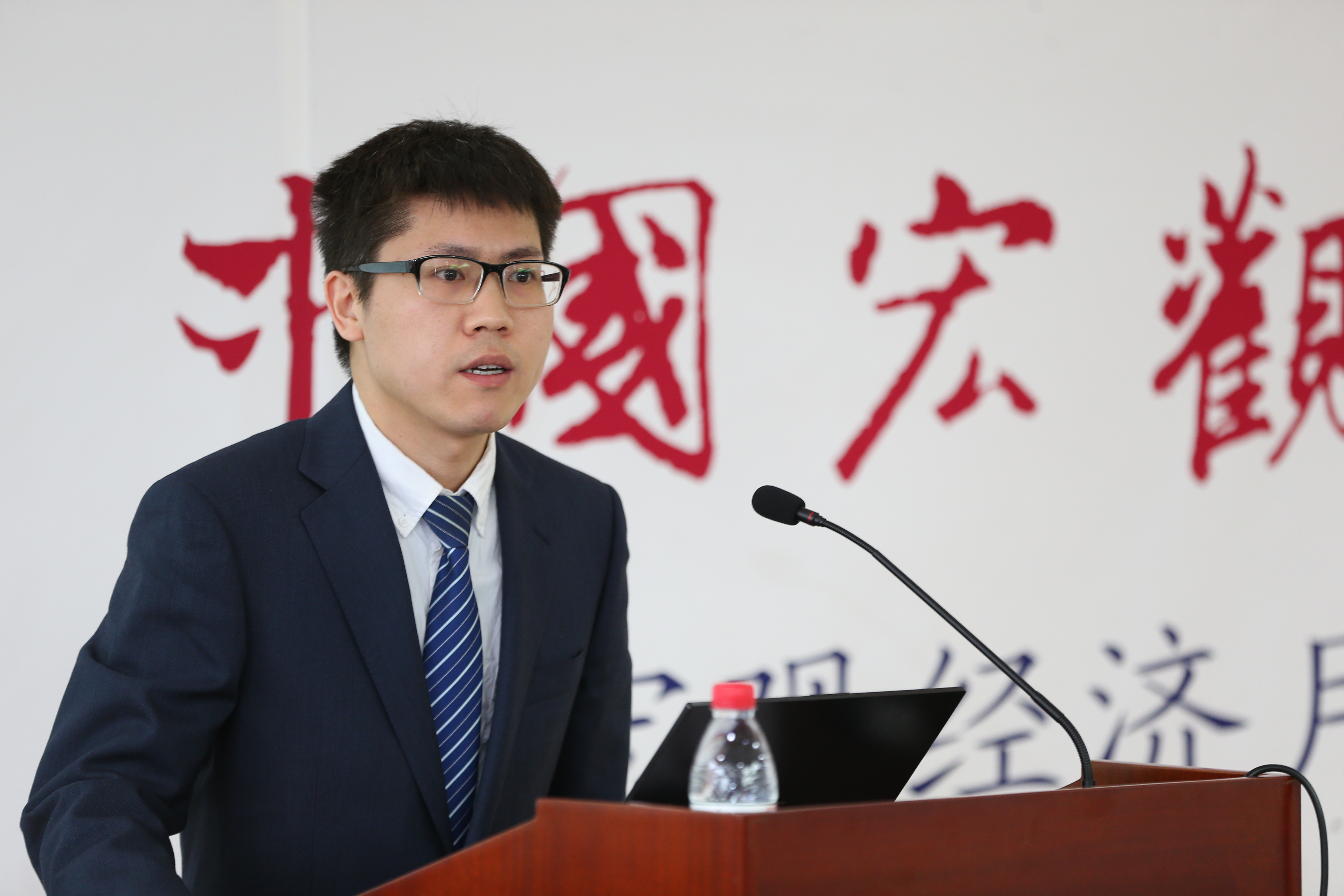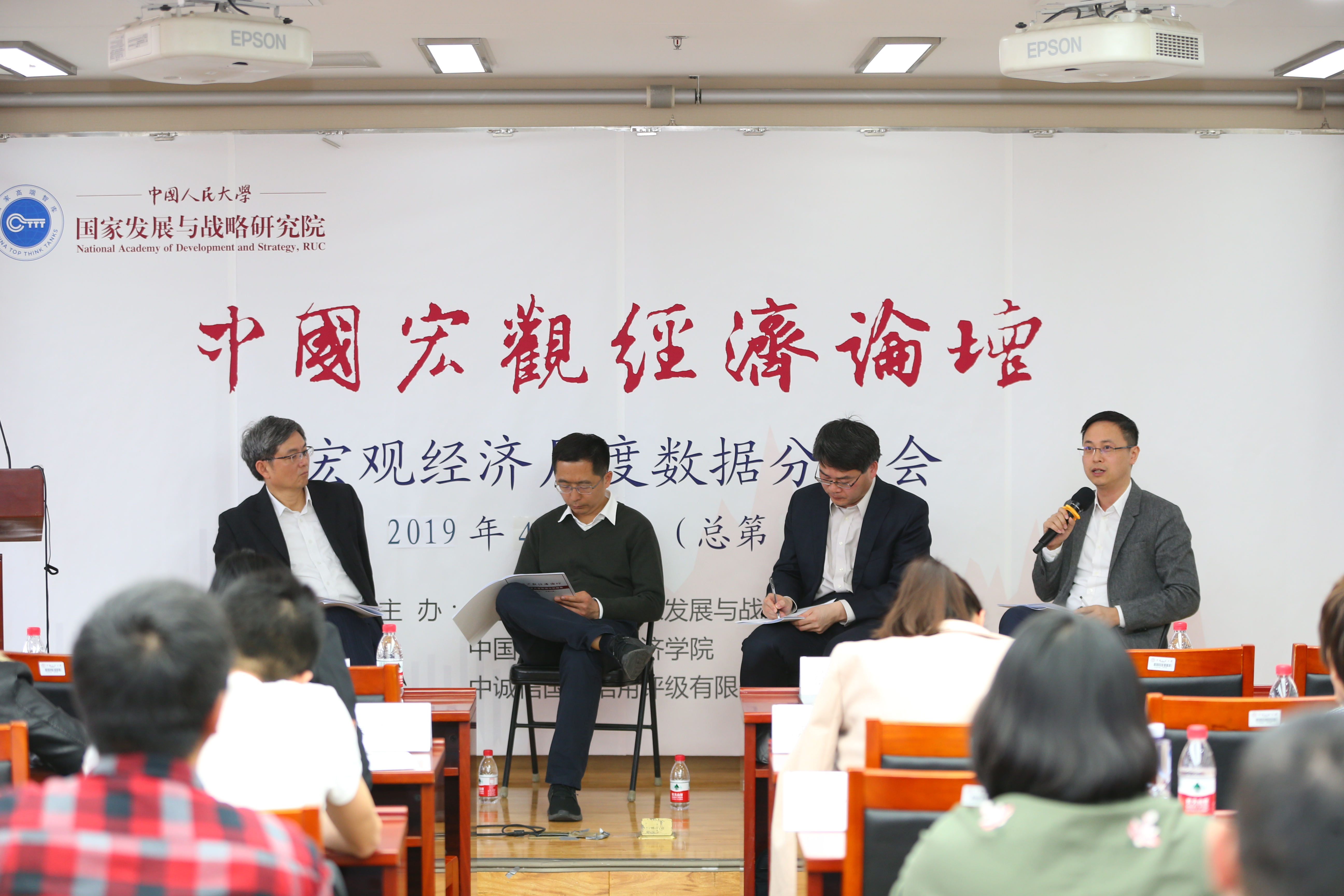 Research Update
Research Update
27
AprOn Apr. 20, 2019, the monthly conference on macroeconomic data analysis, jointly hosted by the National Academy of Development and Strategy (NADS), the School of Economics, Renmin University of China (RUC), and China Chengxin International Credit Rating Co., Ltd., was successfully held at RUC. This conference gave an analysis and illustration of macroeconomic data of Mar. 2019.

Attendees of this conference included Wu Ge, Chief Economist of Changjiang Securities and Assistant President, Xu Qiyuan, Director of Economic Development Research Office of Institute of World Economics and Politics, Chinese Academy of Social Sciences, Zhang Junwei, Director of Research Office No.3, Department of Macroeconomic Research, Development Research Center of the State Council (DRC) and Yang Ruilong, Joint Dean of Institute of Economic Research, RUC.

Liu Xiaoguang, Research Fellow of RUC NADS, presented the monthly report of macroeconomic data analysis on behalf of the research group. The report noted that, China’s macroeconomy in the first quarter successfully resisted various downturn factors and most indicators stabilized or improved compared with those of the fourth quarter of last year, due to the boost brought by “six stabilizing goals”policy and a series of reform measures. While on a general view of the first quarter’s core economic indicators, China’s economy was pressured by a mounting structural downturn despite the short-term stability. The report stated that it is crucial to adopt a proper perspective for comprehending the inconsistency and thus proposing an accurate forecast of economic situation in the second quarter and of the whole year. In the first quarter, macro-policy began to take its role and the reform and opening-up regained its speed, leading to short-term stability of macroeconomy in aspects of aggregate demand and aggregate supply. However, due to time lag in policy and reforming bonus, under the inertia pressure of demand shortage in early days, structural downturn pressure of consumption and investment would not end until at least the second or third quarter, which mainly showed in: 1) the actual GDP growth stabilized whereas the nominal GDP dropped at a higher speed. A fairly weak aggregate demand resulted in price shrinking in production field; 2) Investment and consuming demand improved on the margin, whereas inner division became more significant; 3) productivity of Industry and service industry received a short-term stability, while a downturn was still expected in the middle of the year. In general, this year’s economic situation may appear better than that of last year’s due to increasing intensity of macro-policy and reform. However, an accumulation of new crisis and reemergence of previous crisis should be closely watched, as well as regional pressure under increasing structural differentiation. Pace and intensity of the reform should be well controlled and more opportune reform measures were needed.

Guests then commented and discussed on the macroeconomic data and the report. Each contributed points of view to the conference and proposed targeted policy recommendations.